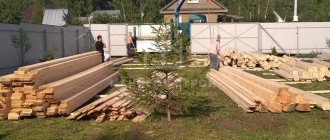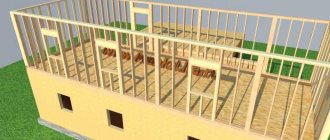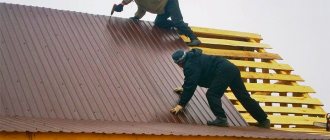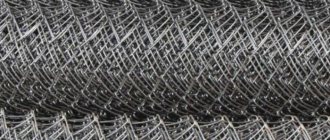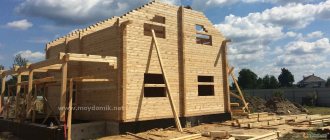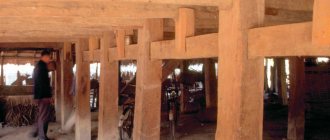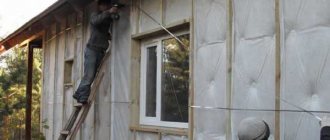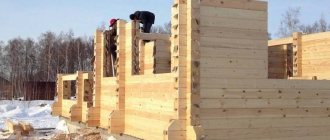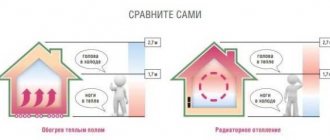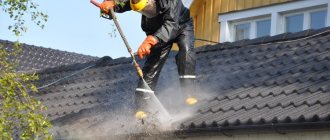Windows are required
After the cow barn is built, it is equipped with all the necessary equipment for the proper maintenance of animals. For each individual, you can make a separate stall using boards or metal pipes.
For proper fattening, you need to properly equip feeders and drinkers. Animals must have free access to food. Feed containers can also be made from wood. The surface must be hewn so that it becomes smooth and the cattle are not injured.
Feeders made of synthetic materials are also quite good. They are convenient to wash and disinfect. It is not advisable to place all food and drink containers on the floor. It is best to fix them at a height of 7-10 cm.
Cattle must be kept at positive temperatures from 4 to 20 degrees Celsius. It is necessary to ensure a good flow of fresh air in the barn, but without drafts. A ventilation corridor will help with this. It is built from boards with a section of 15x15 cm, and then brought to the roof above the ridge. There must be a weather seal available. You can't do without windows in a barn, as animals need light. For 10 sq. One window is enough. Doors should not be through. It is advisable to arrange an entrance for humans and a separate passage for livestock.
Step-by-step instruction
Barn floor
It is very easy to make a floor in a barn with your own hands. It can act as a foundation, since bedding will be laid on top. It is necessary to maintain a floor slope of 1.5-3 centimeters per meter so that waste rolls off naturally.
But the following can act as bedding:
- Wooden shields. A croaker will not work here; you need good boards. They are simply laid on top and nailed into place. But the shields have a drawback - they will have to be changed every six months. The tree absorbs all liquid waste, which makes it unusable. But it is easy to form a slope from the boards.
- Sawdust and straw. They will have to be changed more often - once every 2-3 months, but it will be faster and easier.
Before making the floor in the barn, pour sand under the flooring of panels or sawdust.
Window
On average, a cow barn is equipped with 2-3 windows. Their size should correspond to 1/10 of the wall size. They are placed at a height of 1.2 meters to ensure coverage of the entire barn.
In this case, you should not take glass. Still, the animal can break it and get hurt. Take polycarbonate: it transmits the same amount of light, but it is more difficult to break. In addition, it is impossible for them to get hurt.
Roof
The roof of the barn should be slightly sloped so that precipitation flows outside. No moisture should get inside the barn at all. This can lead to dampness, which causes mold to appear and animals to get mycosis.
As a covering, you can use slate, profiled flooring, or metal tiles. Lay a layer of waterproofing and any heat insulator under the roof.
You can make a roof for a barn with a gable slope with your own hands. This will reduce the load on the walls, but will increase construction costs.
Doors
Avoid the common mistake of having 2 doors on opposite sides. If you open the door, drafts will appear, which can make animals sick. If the barn has a pitched roof, then the air currents will swirl, which will lead to hypothermia of the livestock.
It is better to make 1 door with a vestibule. This way the wind will not penetrate inside, and the dressing room will seal the room.
Insulation
The walls and ceiling need to be insulated. A shed for small livestock can be lined with natural materials: straw, sawdust, felt. For a small block this is enough, but for large buildings you need mineral wool or polystyrene foam.
Lighting and communications
Before you build a shed, immediately think about the lighting. The light from the windows will not be enough, so several powerful lamps are needed.
- How to choose clothes for working in the field: useful tips and tricks
When carrying out electrical wiring, consider the following:
- Use the VVG-P ng cable. This wire can be used to connect lighting and milking equipment.
- Lay the wire in a self-extinguishing corrugation.
Heating is also recommended. Since there are a lot of flammable materials in the barn, the heating should be electric, not gas.
Ventilation
Without ventilation in the room, moisture will not escape, which will lead to the formation of mold. A regular extended system of this type will do. Only 2 holes are needed at different levels so that fresh air comes in and stale and damp air leaves. It cannot be closed even in winter.
Building dimensions
Building a large barn is quite expensive, but even a novice farmer can build a barn for bulls and cows. The room should not be too cramped, but not too spacious. For an adult, 6 square meters is enough. m. If she is kept there with a calf, then the area needs to be increased to 10 square meters. m. Animals will be comfortable with such room sizes.
The areas for each cow are separated by partitions that form stalls. In it, the animal should be with its face to the feeder and its back to the liquid collector. Accordingly, the floor must be built with a slope of 2-3% so that waste products flow into this manure chute. It is laid in the back of the stall. The slurry container can be 10 cm deep and 20 cm wide. If it is planned to keep cattle on litter, then a waste collection system is not installed.
A standard stall should be up to 260 cm in length and 125 cm in width. These dimensions may vary depending on the type and size of the animal. If it is not too large, then 170 cm in length is usually enough.
When stalls in a barn are located along the walls in two rows, there should be a passage between them from 120 cm to 150 cm. The ceiling height is not important, but at least 250 cm is recommended.
The principle of building sheds, the choice of materials
The first step is to decide on the location of the construction of the structure, its size, height and materials for construction. From various sources (books, the Internet, from neighbors who have a shed) you can find many standard construction plans with certain types of parameters. For one adult cow, 18 m2 will be enough. If you want to keep a cow and a calf together, then the area needs to be increased by 6–9 m2. This footage includes space for feeders and a passage.
Typically, a livestock barn is located at the rear of the house. If the site allows, it can be placed separately from the living space. We must not forget about the requirements for sanitary standards: the distance from the barn to the well must be at least 20 meters, from a residential building at least 15 meters. One cow needs a minimum of six square meters. This means that the volume of the structure depends on the number of cows that will be kept in it. You also need to take into account the footage for storing feed and equipment for servicing livestock. Very often, when building a barn, the premises are made without an attic, although food (hay, grain) can be stored there. During severe frosts, the attic can serve as a barrier against the cold.
Sheep barn
Sheep only feel safe when they are in a herd. This means that there is no need to build a separate spacious stall for each animal - the sheep will still crowd together. Sheep spend most of their time outdoors, on the pasture. In the summer, they do not need a barn even for spending the night - a simple fenced enclosure is enough. And for wintering, you can build a sheep shed with your own hands.
Features of keeping a flock of sheep
Sheep are bred primarily for their warm wool. Wool quality is the main indicator of a sheep’s health. When building a shed, you should treat it with an antiseptic to remove fungi and mold. Parasites and rodents are also not allowed in a room with sheep. The hypertrophied herd instinct of sheep does not allow them to scatter around the barn, which is very convenient for the breeder. But still, separate pens should be provided in the barn to separate pregnant or sick animals. Sheep tolerate frosts more easily than other livestock. Thick, warm wool helps them with this. Therefore, when building a sheepfold, you can save on heating and wall insulation. An important condition for keeping a flock of sheep is a hard floor surface. It is harmful for sheep to be on soft bedding, such as hay. This has a negative impact on their weak joints.
Small shed made of foam block
For a small herd of 10 adult sheep, a room of 24 sq.m. will be sufficient. A rectangular building 6000x4000 made of foam block with a gable roof is suitable. The height, as before, is 2.2 m.
- You should start with a strip foundation along the perimeter of the building. A trench is made along a closed contour of 6x4 m, then the formwork is installed and the concrete mixture is poured. It is necessary to give the concrete time to gain strength, then the foundation is covered with a layer of waterproofing material.
- The masonry of foam block walls resembles enlarged half-brick brickwork. You should start from the corners.
When building and arranging a barn for livestock with your own hands, it is important to take into account all the subtleties of keeping an animal. A good and clean barn will be healthy, which means milk yield, wool quality, quantity and quality of meat will increase
In order not to complicate your life by getting to know a trowel or a hacksaw for wood, you can invite a professional construction team who will build such a simple building in a few days.
The effectiveness of a greenhouse is determined by the cost of construction, ease of operation and high returns. For those who have seen enough of finished structures from . Further
A competent approach to arranging the roof of a greenhouse or hothouse relieves summer residents from many problems. Some models are provided. Further
By growing crops indoors, you can provide yourself with fresh vegetables and even create an additional source of income. . Further
Even under the best conditions, the development of greenhouse plants stops when daylight hours decline. Total time. Further
With all the variety of store-bought greenhouses, the idea of self-assembling a home greenhouse still remains relevant. Especially popular in this. Further
At first glance, the organization of year-round greenhouse farming does not differ from seasonal vegetable growing. It seems to be enough in a standard greenhouse. Further
To grow seedlings and herbs in your personal plot, it is enough to build a small polycarbonate greenhouse with your own hands. That, . Further
Stey for bulls
The building for keeping bull calves is practically no different from a conventional barn in design. But, since the weight of adult animals is quite large, key attention should be paid to gender.
It should be located above ground level so that during the cold season or during rains cold air and moisture do not penetrate into the room. In addition, the floor must be insulated, and it is better to build it from materials that can be conveniently cleaned of manure in the future.
Note: The floor in the bull barn should have a slight slope towards the slurry collection tank.
As a rule, plank flooring based on concrete or cement screed is used as flooring in a steer barn. This flooring can withstand the weight of animals well and has a long service life.
From the video you will learn how to build and equip a barn for summer and winter housing of livestock.
General requirements for a barn
When planning the construction of premises for keeping livestock, you need to take into account several factors at the same time:
- animal comfort;
- comfort of the serving person;
- adequate conditions for regular livestock cleaning;
- simplicity of the barn design;
- use of inexpensive building materials.
The ideal livestock barn meets all of these requirements.
Location of the livestock barn on the site
You need to choose a place to build a barn for livestock with your own hands, taking into account the location of other buildings on the site. First of all, you should protect your home and vacation spots from such a “fragrant” neighborhood. Try to place the shed at a distance of 15-20 meters from a residential building. This will be enough to avoid the smell of manure.
Another fundamentally important condition is that the cattle barn must be located away from wells and water wells. This is due to the fact that animal waste products not only smell bad, but are also sources of infections and parasites
If this rule is not followed, the water in the well may become unfit for consumption.
If you plan to use manure to fertilize your garden, build a pen near your garden beds. Animals that will regularly leave their barn to graze must have an unobstructed path to exit. Otherwise, your flower beds, vegetables or lawn risk being trampled and eaten.
Suitable building materials
In principle, you can build a barn for livestock with your own hands from anything. The main building material from which walls are built is used:
For small sheds on a personal plot, wood is most often used. It is warm enough, easy to work with, and such a building costs an order of magnitude cheaper. But, if we are talking about a spacious room for a large number of livestock, it is better to use other materials. A permanent shed made of cinder block or brick is much stronger and more durable. Interior decoration consists of installing an insulated floor so that animals that sleep on the floor do not freeze or get sick. The walls and ceiling should be treated with an antiseptic or at least lime to protect against fungus and insects.
Sheds for animals and poultry - DIY construction - let's look at it in detail
Sheds for animals and poultry are a necessity, because it is best to keep farm animals and birds in specially designated premises. It is not very convenient to adapt existing buildings, for example, former warehouses or industrial workshops, to the needs of pets. Sometimes remodeling takes as much time as new construction. Therefore, it is advisable to immediately begin building a separate poultry house or barn, which will initially meet all the necessary requirements. This is what our article is about today.
Special premises are required to keep poultry and livestock on the farm.
Choosing a site for a building
The location for the poultry house or barn should be chosen so that it is located on a slight hill. There should be a flat area for walking nearby. The outbuilding should be separated from the residential premises by at least 15 m. It is advisable that the windows of the future barn face south - this way they will receive more sunlight. The building for animals and poultry should be kept away from wells and wells with drinking water, because waste can get into them. Also, there should be no cesspools or toilets nearby - pets will probably not like their smell, and such objects can become sources of infectious diseases.
Sheds for animals and poultry should be placed so that it is convenient to approach them and bring loads. And also so that manure and garbage can be quickly and easily removed from utility rooms. Above the main buildings it is worth equipping a dry attic for storing hay and other feed - this is an excellent solution for saving space.
The barn should be located away from housing, wells and water wells
Planning nuances
For construction, you can use ready-made drawings, although their presence is not mandatory. The design of any shed for domestic animals is not particularly complicated, the main thing is to choose the right dimensions and outline the location inside the necessary devices: stalls for livestock, perches for birds, feeders, drinking bowls, etc. You can draw a roughly approximate plan by hand, but be sure to mark on it the necessary requirements officially imposed on such buildings.
Table 1. Basic requirements for sheds for livestock
| Dimensions | They are determined individually, depending on the number of individuals. For 10 chickens you will need an area of 3-4 square meters. One goat needs approximately 2-4 sq. m., per cow - 7-9 sq. m. You also need to consider space for feeders and other equipment. The height of the premises can also be different: for a barn - at least 2 m, for a goat barn and pigsty - 1.5 m. |
| Availability of walking space | For chickens and rabbits, a walking area is not necessary if they are kept in cages. Otherwise, it can be made very small. For goats, sheep and cows, you need to fence at least 10 square meters. Pigs most often do not need a pasture either, but a very small area can be fenced off near their barn to expand their living space - physical activity helps increase appetite, and the piglets grow faster. |
| Windows and doors | There should be enough windows to keep the room light. It is advisable to make them glazed, with detachable transoms. Most of the window openings should be located on the south side. Doors can be made on the opposite side. The openings should be wide so that waste can be easily carried out through them and food can be brought inside. It makes sense to have bi-fold doors in the barn. |
| Ventilation and insulation | All cracks in the walls are carefully sealed - there should be no drafts in the room. But at the same time, the barn must have good ventilation. The barn and poultry house must be additionally insulated; if we are talking about regions with harsh winters, then it makes sense to also install heating. Even in the most extreme cold, the indoor temperature cannot drop below 8-10 degrees. |
| Internal layout | A sufficient number of drinking bowls and feeders must be installed for all animals and birds. In the goat shed and barn, it is advisable to make separate stalls for each individual, and in addition, fence off corners for keeping females with cubs. The same must be done for sows with piglets. Low perches must be made for chickens, nests must be built for laying hens, as well as for ducks and geese laying eggs. |
Approximate drawings of sheds for animals and poultry
You can read how to make a foundation for a shed with your own hands in our article here.
What materials and tools to use
For utility rooms, remnants of building materials that have been in stock for a long time and are waiting in the wings are suitable. You can buy the missing parts and it will be inexpensive. You will also need the most standard tools, which are usually found on any farm: saws, hammers, nail pullers, containers for mixing mortars, brushes and rollers for painting, tape measure and slopes for measurements, etc.
Most often, sheds for domestic animals are made of wood or brick/cinder blocks. Lightweight frame-and-plank structures are an excellent option for southern regions where severe frosts do not occur. You can use this type of building in the middle zone, but then you will need to provide insulation. For areas with a more severe climate, permanent sheds made of brick and similar materials are optimal.
Wooden structures are erected faster, but do not last as long as stone-brick structures. A wooden shed must be well strengthened, the walls must be primed and painted. It can be insulated from the outside and inside using a suspended profile, shingles, etc. Capital buildings for animals are erected on a columnar foundation, for which it is most convenient to use aerated foam concrete blocks, held together not with concrete, but with a special construction adhesive.
Frame barn
How to build a poultry barn
The farm may contain chickens, quails, turkeys, geese and ducks. Premises for different types of birds generally differ only in size. Turkeys and waterfowl, as well as broilers, will need larger sheds. Although there are a number of other nuances. For example, turkeys are thermophilic, so it is necessary to maintain a high temperature in the poultry house for them. Chickens need roosts, but ducks and geese do not need such an interior detail.
It is better to make the foundation for a poultry house a strip type - from concrete, so that mice, rats and small predators such as ferrets cannot penetrate under the floor. The depth of the base may not be too great - 25 cm is enough.
Important point! It is permissible to make the floor earthen or clay, but you can fill it with concrete and make a boardwalk on top.
Wooden beams are erected at the corners of the future building, and horizontal partitions made of narrow boards are made between them. Then the building is sheathed with plywood. On the south side, two or three windows should be cut under the ceiling. The door is not made too wide and high. For the birds themselves, you can arrange a separate hole. The roof is made in one slope; it can be covered with reeds or straw, and roofing material or slate can be placed on top. Be sure to take the pipes outside for ventilation.
Poultry house with walking
How to insulate a poultry house?
A poultry barn is usually built without capital construction and without heating. But the temperature inside should be quite high even in winter cold. This is achieved through additional insulation. First of all, all cracks in the walls are carefully sealed: drafts are the most common cause of heat loss.
For the winter, window frames are sealed with sealant or usually with plastic film on sealant. Doorways are also carefully insulated. A layer of straw, hay or large wood shavings is placed on the floor (small sawdust will not work). Ceilings can be insulated for the season with foam plastic or film.
But it is better to treat plank walls immediately during construction. They can be insulated with different materials. One of the most economical and simplest is the “old-fashioned method” - clay shingles on a sheathing. This is an environmentally friendly material that is not harmful to poultry and creates an optimal microclimate in the room. It is easy to install shingles, it does not last very long, but it is easy to replace it with a new one without high costs.
The floor in the poultry house is insulated with hay or sawdust
Instructions for installing shingles on walls
Step 1
Thin slats are used for the frame, which can be purchased at any building materials store.
Buy thin slats
Step 2
Thin slats are nailed from the inside to the walls of the barn in a diagonal order.
Nail the slats diagonally
Step 3
Next, a mixture is prepared from liquid clay (it is soaked for two days in a separate container), wood shavings or straw.
Prepare the solution
Step 4
The solution is applied in a thick layer to the sheathing using a trowel. You need to start from the bottom of the wall, gradually moving up and carefully leveling the surface.
Apply the solution to the sheathing
Step 5
After drying, the wall is rubbed down and painted with diluted lime. Whitewashing is necessary because it serves as a sanitary measure.
Paint the wall
Interior arrangement
To provide the feathered residents with normal comfort, it is necessary to make perches and nests inside the barn, install drinking bowls and feeders. In this case, a number of rules should be observed:
- chickens spend a lot of time on roosts, so the perches must be strong enough; wooden beams with a diameter of 5-6 cm are suitable for their manufacture; the sticks need to be given a rounded shape and sanded with sandpaper; place the structure at a height of 45-50 cm from the floor;
- nests are arranged in the darkened part of the poultry house; you can use old boxes or baskets 40-50 cm deep and 30-35 cm wide for them; put straw or sawdust inside; the number of places is calculated based on the number of laying hens: for example, 10 nests are needed for 20 birds;
- It is better to make feeders and drinking bowls closed so that birds do not steal food and spill water, polluting the floor;
- It is also necessary to provide separate containers with fine ash - birds bathe in them, getting rid of parasites under their feathers.
It is necessary to make nests for laying hens in the chicken coop
How to build a rabbitry
Housing for long-eared pets can be created using a frame-and-plank structure. Such a barn is not large in size, but inside it should be divided into zones or separate cages for furry animals should be installed. It is better to keep rabbits one at a time to control the breeding process. For females with cubs and ungrown young animals, a more spacious corner with insulation and artificial light is allocated.
Video - Construction of a rabbitry
In general, the construction of a wooden rabbitry resembles the process of constructing a poultry house described above. But in this case the room should be larger and higher. It is more convenient to arrange the cages inside in two rows to save space. Therefore, for 10 animals you need a barn with dimensions of 3x5 m and a height of 2-2.5 m. The building needs a stable foundation on a reinforced frame filled with concrete. A timber structure covered with edged boards is installed on it.
Tips for a Rabbit Shed
Shred cages are installed inside the rabbitry: adjacent cells with a front mesh wall. Most often they are installed in several tiers - two or three. Feeders and drinking bowls are hung on the front part.
Rabbit barn
How to build a barn for pigs, large and small livestock
For larger pets, a permanent building made of brick, concrete or gas-foam concrete blocks is better suited. The barn should be made spacious so that it is comfortable for the livestock and the people caring for them. Cows, goats and sheep are milked regularly, so there must be enough space inside to carry out such a procedure. Six square meters are provided for one cow, two to four square meters for goats and sheep. m. The room should have wide passages and large doors to make it convenient to remove manure and bring in feed every day.
Video - Animal barn
First, a foundation is made from bricks or blocks, lined with concrete. The base is laid in a pre-dug trench about 0.6 m deep. Next, corners are made from the blocks, they are aligned using a level and plumb line. After that, guides are installed - vertical bars that are attached to the blocks using brackets. A cord is stretched between them in order to see how to make even laying. Now you need to build walls - approximately 2-2.5 m high. It is then recommended to putty the seams on the inside to avoid drafts.
The roof is made gable. The floor is poured with concrete; grooves must be made to drain urine and liquid waste. A boardwalk made of individual panels, which can be replaced, is laid on top. The internal space is delimited by separate stalls, each with a personal feeder and drinking bowl. It is worth installing electricity into the barn, and running water into the large barn and pigsty. Running water works well for daily cleaning.
The barn should be spacious, with separate stalls inside.
Conclusion
For the proper maintenance of farm animals and poultry, separate premises are required. Building a shed with your own hands is not that difficult; you can use leftover building materials and the most common tools. The main thing is to choose the right place for the building, decide on the type and size of the structure.
For feathered pets and small animals, in particular rabbits, a small wooden frame shed is suitable, which will need to be well insulated. For larger livestock, it is worth erecting a spacious, solid brick or block building with separate stalls inside.
Arrangement of the barn and hygiene of the premises
First of all, you need to provide lighting and fresh air. The optimal temperature for keeping cows is 8–10 C°. Permissible temperature fluctuations are from 4 to 20 C°. The animal must not be allowed to overheat. At a comfortable temperature, metabolic processes in the body do not waste energy on heating the body, thereby increasing the weight gain and milk yield of cows. You also need to organize the correct supply of fresh air. It is not recommended to allow drafts in the room, as they cause many diseases. The ventilation corridor is constructed from boards with a cross-section of 15x15 cm and is brought above the ridge to the roof. It must have a damper that will protect from bad weather and precipitation in the form of snow.
To keep the barn dry and comfortable, you need to provide bedding. It keeps the cow warmer. This material absorbs moisture, thereby making the room drier. If you don't want to clean the shed every day, you can gradually add bedding, which over time will make a kind of pillow. In winter, it will be warmer for the cow to rest on it.
Equipment in the shed includes:
- Feeders for hay, straw and liquid feed. They should be quite voluminous, convenient for feeding and cleaning. The best solution is to install them in front of the stall. Dimensions for one cow: front wall with a cutout for the neck 35–40 cm, back wall 70–80 cm (so that feed does not fall out), length no less than 1.2 meters. Tray for lick (salt). The animal’s body requires replenishment of minerals; in winter, their deficiency is compensated for with salt.
- Drinking bowl. It should be equipped so that the water does not overflow and is not contaminated with waste. Technologies have stepped forward, so automatic drinking bowls are installed in modern barns. They can be connected to the central water supply; if there is no access to it, then to the water tank. The automatic drinking bowl makes your work easier; you don’t need to carry and store water in buckets.
- If there are several cows of different ages in a barn, then a dividing grid is needed so that the animals cannot injure each other.
- Calf pen.
- Door. Many people make a grave mistake when they install several entrances to a room, usually through ones. When opening such doors, a draft is created, which has a detrimental effect on the health of animals. Therefore, we recommend stopping at one entrance to the barn. To further insulate the room, you can make double doors. There will be an air cushion between them that will not let cold air into the barn.
From time to time, the barn needs to be disinfected. Liquid feed and waste are a favorable environment for the development of pathogenic microflora. The walls of the barn should be disinfected with a lime solution twice a year (in spring and autumn). Treat feeders for liquid food with lye. It is also necessary to ventilate the room every day in any weather. Drinkers and service equipment must be cleaned as necessary. We should not forget about blowing out the ventilation ducts. Otherwise, they may become clogged and stop performing their intended function.
In a subsidiary farm, a barn for livestock is an integral part. Everything necessary for keeping cattle is located here - equipment, ventilation, windows. In this case, the structure must be located in the right place. Construction materials also play an important role. Comfortable living will provide the livestock with good health, good weight gain, and high milk yields. The article discusses the rules for building a building with your own hands, taking into account the basic requirements for keeping animals.
DIY rabbit shed
Rabbits, as you know, are both valuable fur and dietary meat. The shed for keeping them is different from the pens for other livestock. It is a room with several cells. The rabbit is a very capricious animal and does not allow any concessions in care and maintenance.
There is a separate cage for each rabbit
Features of rabbit breeding
The main feature of keeping rabbits is their number. If in an ordinary home shed for a cow or goat there are, as a rule, 3-4 individuals, then the number of rabbits can reach fifty. Another feature, which is partly the reason for the previous one, is that rabbits reproduce very quickly and uncontrollably. To slow down this process a little, individuals of different sexes are kept separately from each other. Rabbits, like other animals, can be of different breeds. Some survive calmly in harsh winter conditions, while others are more picky about temperature and weather conditions. When building a rabbit shed with your own hands, you need to pay attention to the characteristics of your breed of furry animals.
In warm weather, cages with rabbits are taken out into the fresh air.
Algorithm for constructing a dwelling for a rabbit
The rabbit barn is built in such a way that it is easy to place cages in several rows. The barn should be spacious, ventilated, bright and protected from rodents. Step-by-step instructions for building a shed: Development of a drawing. According to the standards, one large adult rabbit should be placed in an area of 1.5 sq.m. Thus, given that a two-tier shed system is used, for 10 rabbits you will need 7.5 square meters. m. Since the barn must have space for equipment and a person who cares for the animals, a building of 3x5 m will be sufficient. The height of the barn is assumed to be 2-2.5 m - so that it is comfortable for a person to be there.
Foundation for a wooden stable
Foundation construction. A monolithic foundation is erected for a wooden shed. To do this, holes are made at the locations of the load-bearing pillar columns, about half a meter deep. A reinforcement frame made of several pieces of steel wire is placed there and a concrete mixture is poured. The top of each foundation must be covered with a layer of waterproofing. When the concrete gains strength, you can begin to build a wooden frame. Columns made of 20×20 wooden beams are installed on the foundations. The vertical elements are connected by a belt. Cross beams made of 15×15 or larger wooden beams are attached perpendicularly to the existing vertical posts.
Wooden frame of a small rabbitry
The shed is covered with edged boards. Openings are immediately outlined: windows and doors. The roof is made pitched. Covered with slate or roofing felt. Then the window frames and doors are installed. Glazing is in progress. When all construction work is completed, electrical installation work begins. Provide lighting, install sockets and switches.
Wooden house for rabbits
The simplest barn for keeping rabbits is ready for the installation of cages. The rabbit cages most often used in animal husbandry are called sheds. Sheds are a complex of identical cells-cells, adjacent to each other, located on one or several tiers. The shad are united by a common feeding trough, and sometimes by an improvised sewer system. According to the experience of farmers, this method of breeding rabbits is the most optimal.
Preparatory activities
Having gone through the stage of designing a barn and having all the necessary drawings/diagrams in hand, you can proceed to the preparatory work. Don't think that this step is less important. They cannot be neglected. If you start construction work right away, the lack of preparation will lead to the fact that previously made mistakes will make themselves felt and cause a lot of problems.
At the preparatory stage you will need:
- decide how many heads will live in the future barn;
- prepare all the building materials that you plan to use in the construction of the barn;
- purchase all the necessary consumables (fasteners), and also pre-determine all methods of fastening the main structural elements;
- study of the area allocated for future construction work.
Preparing a site for a barn is one of the most important preparatory stages. It must be taken into account that the site for such a structure must be perfectly level. Experts strongly recommend preparing barns in which cows will be protected from the wind (regardless of the number of heads - there can be 5, 10, 50, or 100). That is why you should not build barns in places where the winds blow especially strongly.
Start of construction
The project must reflect the construction concept and the final result as accurately as possible. Before starting all work, it is necessary to determine the location, taking into account a possible increase in the number of livestock. Some additional buildings for calves may also be needed, depending on which animals will predominate - meat or dairy.
The order of work is as follows:
- the foundation is laid;
- lays and arranges the floor;
- the walls of the barn are being erected;
- floors and roof are being built;
- The barn is equipped with everything necessary.
First, you need to mark the boundaries of the territory where you need to build a barn for cows on a household plot. Ropes and pegs will help in this matter for more even digging of the trench under the foundation.
Construction stages
First of all, we start marking the boundaries of the future barn. To do this you need to stock up on rope and pegs. Strictly according to our markings, we dig trenches to fill the foundation. In the dug holes it is necessary to make a cushion of crushed stone and sand. As a rule, small stones, broken bricks, cement and water are used for the concrete mixture. The solution should be “thick sour cream.” To prevent such a batch from spreading in the dug trench, we make formwork from wooden boards. Now we can safely pour the solution. After pouring the foundation, work should be stopped for several days. If you want to make a rigid base, then you can use reinforcement for strengthening. Most often, metal rods with a diameter of 8–10 mm are used for this purpose. In order for the mixture to dry properly in hot weather, it must be moistened with water. We also recommend covering the entire perimeter with roofing felt.
Sheds for livestock must be warm, so the material for construction must be taken responsibly. The choice of material also depends on climatic conditions. Builders advise making a shed with your own hands from materials such as boards or logs. But sheds built from bricks, aerated concrete and foam concrete blocks have proven themselves well. To maximize the insulation of the barn, the material you choose for the walls should be laid in two layers. We fill the space between them with insulation, it can be foam, clay, glass wool, foam rubber. The most affordable and easiest to build with your own hands is a combination of brick, glass wool and slag concrete. During the construction of walls for a shed, their evenness must be controlled using a building level. If your choice fell on foam blocks, then the construction of a structure for cows should begin from the corners. In a barn for livestock, you also need to take into account the location of the ventilation for a favorable microclimate.
When the construction of the walls is completed, the ventilation ducts are insulated, we can begin choosing the flooring. You can make the floor yourself from concrete, which has proven itself to be durable and hygienic. Clay also holds heat well. Wooden coverings are not recommended due to impracticality. It absorbs odor, wears out quickly, and after some time it will have to be completely replaced. We begin building a floor for cows with our own hands by creating a level, the height of which from the ground should be at least 10–15 cm. You also need to take into account the slope towards the sump, which is 1–3 cm per linear meter. At the end of the slope, we build a tray with our own hands for cow waste, the dimensions of which are 10–15 cm in depth and 25–30 cm in width. With a large number of cows, it is advisable to build a chute for draining slurry (slurry collector). The gutter itself should also have a slope for easy removal of calf or cow urine. Thanks to it, the level of harmful substances accumulating in the air in the barn will decrease. The size of the gutter depends on how often you will be cleaning your shed. The minimum tank size is 1 m 3.
If you decide to build an attic, then its size depends on how much feed will be stored in it. On average, for a sufficiently voluminous haystack to fit, 2.5–3 meters in height is enough. Hay is also a good insulating material. Due to this, you can save on insulation. It is possible to make an entrance to the attic inside the barn itself, which will simplify the supply of food to the animals. The attic is made of wooden boards, fastening them together with nails.
The final stage in construction will be the installation of the roof. The material for the roof can be metal tiles, but slate will significantly reduce the cost of construction. Insulation in the form of glass wool must be laid on top of the lag. For good insulation, we cover it with boards and fasten the entire structure with nails with large heads. To ensure water drainage during bad weather, the roof is installed at a slope.
Shed materials
Barn made of timber
You can build a barn from timber, for which a columnar foundation is sufficient. A building made of wood differs from others in its enhanced aesthetic properties, and wood also has many well-known advantages. A strapping crown of antiseptic-impregnated beams, connected at the corners by means of dowels, is laid on the waterproofing (three layers of roofing material). All subsequent crowns are laid on a layer of insulation (jute, tow). The “claw” connection at the corners will allow for subsequent finishing without additional effort. Beams are laid on the upper crown, and the ceiling is laid. The rafters are installed in accordance with the planned shape of the roof and the presence of an attic in the forecast.
Foam block structures
For a powerful building, an erected shed made of foam blocks on a strip foundation is suitable. It is built on a sand cushion in a meter-deep trench by pouring concrete into formwork with a reinforcement cage. After the base is completely ready, waterproofing is laid, and the laying of blocks begins. A mixture of sand and cement or a special glue is used as a binder, which produces smoother and thinner seams. Each subsequent row is shifted by half the length of the block. The laying is carried out from the corners, carefully checking all surfaces with a level and a right angle with a protractor. It is convenient to use special corner blocks. The material is convenient, easy to saw with a hacksaw, and thanks to its large dimensions, walls can be erected quickly. Since the blocks are standardized, the surface is decorative and smooth. A guide beam is laid on top, floor beams are attached, and rafters are installed. For the roof, you can use slate, which is laid overlapping and secured with nails.
Sleeper shed
Before making a shed from sleepers, you need to decide on its location. Pre-excavation work is carried out, the site is leveled, and the soil is compacted. The foundation can be columnar, so the top soil layer is removed and holes are dug 0.5x0.5 m to 0.4 m deep. A sand-crushed stone cushion of 15 cm of each layer is made, moistened and compacted. The cabinets can be made of red brick using a sand-cement compound. Approximately three posts are needed for one sleeper. If desired, the foundation can be strip. The walls begin to be erected, having previously completed roofing felt waterproofing. To fasten sleepers together, staples are used. They can be replaced by long 200 mm nails, which are driven in at an angle. The insulation between the crowns can be laid during the construction process, or you can use polyurethane foam at the end.
Basis - frame
If desired, you can build a frame shed that is structurally simple. For the frame, you can use boards, bricks, logs, or combine different materials. For example, on a brick base, continue working with logs. The frame bases are made vertical. Then it is sheathed with overlapping boards.
Barn made of slab
The easiest way is to build a barn from a slab with your own hands, for which you don’t even need a foundation. It is enough to lift all the structures by placing them on blocks of wood. After installing the bottom trim and laying the floorboards, everything is coated with an antiseptic. Racks with supports and beams at the top for the roof are installed on the waterproofing layer. Unedged boards are overlapped onto the frame, most often in a horizontal direction, leaving an opening for the door. For the roof, roofing felt is used, secured with strips. Inside the wall, for strength, a metal strip is stuffed around the perimeter and a door is installed.
Shed made of corrugated sheets
If desired, without much difficulty you can make a shed from corrugated sheets, which will require a monolithic foundation. In addition to the construction of premises, corrugated wall sheeting has found its application in the construction of fences, and not only industrial facilities, but also around country buildings.
It has many advantages compared to other building materials. The market price of corrugated sheeting is affordable for any consumer. It differs in weight from other roofing and building materials. There will be no problem with choosing a color. The polymer coating of profiled sheets has up to 30 shades.
The site is leveled and 50 cm of soil is removed over the entire area. A cushion is poured from sand and gravel, a thin layer of crushed stone is added on top and compacted. Concrete is poured onto the laid reinforcement throughout the site. When it dries, concrete blocks are installed around the perimeter so that their upper surfaces are in a single horizontal line, which is verified by a level. For the future floor, beams and crossbars are installed. The frame is fastened with corners and self-tapping screws. The frame for corrugated sheeting is made of vertical posts with horizontal reinforcing bars. The corrugated sheeting is attached with overlapping screws. A shed made of corrugated sheets can be insulated from the inside. The roof may have one or two slopes. A gable roof is preferable if you need an attic. The roof can be covered with corrugated sheeting coated with polyester. It is attached with overlapping screws to the sheathing.
Roof construction
The roof is the final element in the construction of a barn for bulls and cows. Based on the size of the building, it can be covered with slate. If you choose from more expensive materials, then metal tiles will do. In regions with warm climates, polycarbonate has proven itself well. This material also provides additional lighting.
The roof also needs to be insulated. Glass wool, which is laid on top of the lag, is suitable for this. Water drainage can be ensured by constructing the structure on a slope.
Now let’s reveal a little secret on how to make the roof even warmer. To do this, simply build a hayloft or attic on top. Their presence creates additional air space, which helps retain heat. The dimensions depend on how much feed or hay should fit there. If you make the attic height 2.5-3 m, then a fairly large haystack will fit there. Access to the hayloft can be made from inside the barn, which then makes feeding the animals much easier. For construction you will need ordinary wooden boards and nails.
Building a barn at home
Cattle must also be kept under certain conditions. A cowshed is a full-fledged home for an animal, a place where it will winter, sleep, eat, drink and relieve its natural needs. The cow gives not only meat, but also milk. Therefore, the barn must be equipped so that it is comfortable not only for the cow, but also for the milkman, who will milk the cow several times a day
Interior arrangement of the stall
Features of keeping cattle
In a lying position, an average-sized cow occupies an area of 1100×2100 mm. Of course, with such dimensions of the animal, the barn must be spacious and durable. According to the standards, at least 6 square meters must be provided for one cow. m area. The main problem with a cow barn is cleaning. It must be done regularly, otherwise the barn will very soon turn into Augean stables. The floor in the barn is made slightly elevated. A 1 cm gap is left between the boards to allow urine to drain. In the summer, the cow's liquid waste falls directly into the cesspool through cracks in the flooring. In winter, this method is not used, since a lot of heat is lost. In winter, a thick layer of hay is laid on the floor, which acts as an absorbent. When the flooring gets dirty, replace it with fresh one.
Each cow has a separate stall and drinking bowl with clean water.
Step-by-step instructions for building a barn
Building a barn for a cow with your own hands is not that difficult. For three cows, feeders, storage space for equipment and space for passage, a room of 24 sq.m. will be enough. The algorithm for constructing a rectangular brick building measuring 6000×4000 mm with three stalls looks like this:
- A strip concrete foundation is installed for a brick shed.
To do this, you need to dig a trench around the perimeter of the building. The depth of the trench is 0.7 m. Permanent formwork is installed in the trench and concrete is poured. A waterproofing layer of roofing felt and bitumen coating are placed on top. Concrete strip foundation - The construction of walls begins from the corners. Checking the level and plumb line, you need to lay several rows of masonry at each corner. Then the rows are installed - vertical beams, leveled and nailed with staples to the existing bricks.
- All rows of masonry are marked, after which the cord is pulled.
It ensures the horizontality of all subsequent rows of masonry. Thanks to the tensioned thread, the rows are even - Cross masonry of one brick will be enough. The first row is bonded for better adhesion to the foundation. The walls are erected with a height of 2.2-2.5 m. All openings are taken into account. It is not necessary to open the joints, since the building does not bear any aesthetic load.
- For a gable roof, covering elements are installed - logs, on which the wooden flooring will be laid.
The top of the flooring is covered with metal tiles. The wall is ready - The concrete floor is being poured. To drain waste products, it is advisable to make the floor with a slope towards the drainage pit.
- Then the boardwalk is pricked with gaps of 1 cm. It is most rational to make the flooring in the form of separate removable boards, which can be lifted for cleaning and removed completely, if necessary.
The building looks more impressive if you use facing bricks
It is good when there is running water in the barn for livestock. Running water under pressure is good for cleaning up after cattle. And the fact that an adult cow can drink up to 80 liters of water per day suggests that a tap with clean water in the barn will not hurt.
Pouring the foundation
This work must be carried out especially efficiently, since the strength of the entire shed and its service life depend on this design. After the trench is dug, a cushion of crushed stone and sand is placed in it. Before pouring concrete, formwork must be made in the dug holes. By mixing the solution, bring it to the state of thick sour cream and pour it into the prepared ditches. To strengthen the foundation, you can use reinforcement with a diameter of 8-10 mm. For high-quality hardening, cover the entire perimeter with roofing material. This method is called monolithic.
If the building should not be too large and made of wood, then you can make a foundation on pillars. This design is simpler and less expensive. It resembles the first option, but the difference is that the foundation pillars are placed in a form with reinforcement, which is insulated with roofing felt. Then concrete is poured there. These pillars are installed at intervals of no more than 2 m. All work is also preceded by laying a sand cushion.
In general, the simpler the structure, the easier it is to lay the foundation. It also all depends on the composition of the soil. A suitable foundation is selected based on these parameters.
Organization of the construction process
To get a warm barn for cows, you need to follow a certain algorithm of actions. Each stage requires a responsible approach and the use of quality materials.
Foundation
Regardless of how many cattle you plan to keep, you must make a reliable and durable foundation in the barn. For a small room made of wood, a columnar foundation is quite sufficient. If the barn is designed for a large farm, then a monolithic or strip base will be required.
The main thing here is that the foundation is located at a depth of soil freezing - from 50 to 100 cm or more. Everything will depend on the characteristics of the climate zone. When constructing the foundation, the top layer of earth should be removed and removed.
The barn floor, whether concrete or wood, should slope 5 degrees toward the nearest drain. This technique will force urine and manure into collection containers. To ensure such a slope, the floor level must be 10 cm higher than the ground level.
If the floor is made of concrete, the service life of which is at least 10 years, then wood is used to insulate its surface. But due to the fact that this material absorbs ammonia, it must be replaced at least once every 5 years. When planning drainage ditches, they adhere to a width of 30 cm and a depth of 15 cm. Such parameters make it possible to freely work with a shovel when removing livestock waste.
Walls
Stone walls stand out for their increased strength, but they have one serious drawback - their low ability to retain heat. The best option is to use bricks and foam blocks. But they need additional thermal insulation to maintain a normal indoor microclimate.
See also
Instructions for use of Chiktonik for calves, indications and how to feed cattleRead
In a climate zone where winters are harsh, the barn should be made of warmer materials - adobe brick/shell rock. They are inexpensive and have low thermal conductivity. As for the thickness of the walls, in most cases it is one and a half bricks. When using foam blocks, it is enough to lay them in one row. The height of the room should be 2.5 m.
Roof
According to the recommendations of experienced farmers, it is best to choose slate sheets for roofing. This building material belongs to the category of budget and practical coatings. The roof installation process is relatively simple; you need to:
- Make a frame from planed boards, which are pre-treated with antiseptic compounds.
- Lay thermal insulation on top of the wooden structure.
- Secure the slate sheets using fasteners.
The roof can be either single-pitched or gable. The second option is more preferable; there is also room for hay, and the room is warmer.
Windows and doors
In a barn, the main source of natural light is the windows. According to all standards, their total area must be at least 10% of the entire floor area of the building. As a rule, the lower part of the window opening is located above the floor at a height of 1.5-1.6 m.
There are the following types of windows for a barn:
- hinged type with double glazing;
- hinged, equipped with a polycarbonate insert;
- sliding with sheets of transparent polycarbonate.
It is better to make doors in the barn with a swing plan, which need to be additionally insulated to retain heat inside the room. For convenience, the gate should be made liftable.
